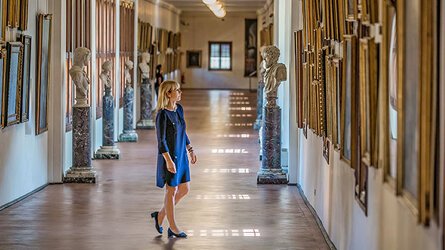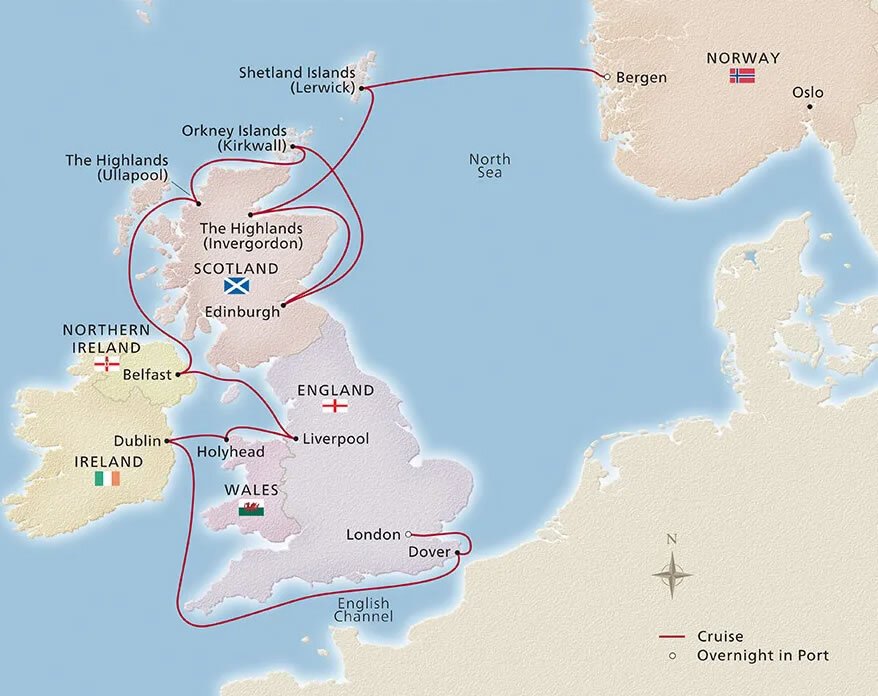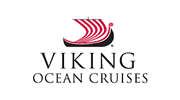Overview
Itinerary
Embark your ship and settle into your stateroom. Bergen is home to the Hanseatic League's only kontor (trading enclave) still in existence. Bryggen wharf, a row of timbered Hanseatic warehouses along a quaint quay, is a UNESCO World Heritage Site. Narrow wooden walkways are flanked by parallel rows of small, vibrantly painted buildings overlooking the picturesque Vågen Harbor. This is perhaps the most charming district of Bergen and a delight to explore, from its tight-knit community of workshops where artisans sell their wares to its cafés where freshly prepared smørbrød, or open-faced sandwiches, are on the menu.
Bergen, an ancient city with deep Viking roots, is nestled between gargantuan snowcapped mountains, magnificent fjords and one of Europe's largest glaciers. Founded in 1070 on what was a Viking settlement, Bergen is the second-largest city in Norway. Not to be missed is a stroll through the Fisketorget, where the fresh catch of the sea awaits—from cod and prawns to local caviar and icy oysters.
The Shetland Islands may be remote, but history did not overlook them. At the excavation site of Jarlshof, tall, stone roundhouses date to the Iron Age and an ancient Norse longhouse tells of a Viking community. More recent history echoes through the streets of Lerwick, the islands' sleepy capital founded by Dutch fishermen. The main island, Mainland, gets much of its beauty from its diversity. Farmlands and dreamy meadows unfold toward seal-dotted beaches, rocky cliffs take a beating from the surf, and medieval castles overlook valleys and lakes.
Invergordon lies in the mountainous, heather-covered Scottish Highlands amid a patchwork of farmland. The small community celebrates itself with a series of stunning murals painted by local artists; a walking trail leads visitors to them all, passing colorful window flowerboxes along the way. Whisky is another mainstay here, produced in a local grain distillery. This charming port is the gateway to a breathtaking region that provides a fascinating glimpse into the days of warring clans, and into the legend of “Nessie,” the fabled monster of Loch Ness.
Edinburgh has been Scotland's capital since the 15th century, despite the fact that the Union of the Crowns moved it to London in 1603. There is no capital quite like Edinburgh, with its gorgeous setting on green rocky hillocks and splendid views of the sea. Edinburgh Castle, home of the Scottish Crown Jewels and countless medieval treasures, overlooks the city from Castle Rock. The Royal Mile unfurls Edinburgh's architectural gems in all their finery, from the Canongate to St. Giles's Cathedral to the Palace of Holyroodhouse, the Scottish residence of British royalty.
The history of the Scottish Orkney Islands dates back millennia. Neolithic remains, including the ancient site of Brodgar, predate Stonehenge and the Pyramids. The 13th-century Norse Orkneyinga Saga told of Vikings who ruled here.
Later, the earls took over, and the French Renaissance palace that remains is a legacy to their grandeur. Another castle, Balfour, stands regally in a stark landscape. While the northern Europeans greatly influenced this hauntingly beautiful archipelago, consider the Italian Chapel, built by the hands of Italian prisoners during wartime.
Ullapool enjoys one of the most remote settings in the United Kingdom on the pristine shores of Loch Broom. This tiny town, dotted with distinctive New Zealand cabbage trees, is the largest community for miles surrounded by the stunningly scenic Western Isles, dramatic mountain peaks piercing the sky and unspoiled wilderness. Ullapool's beauty lies in its tranquility. A launchpad for ferries to the stunning Western Isles, this former herring port village is also a popular gateway for walkers, adventurers and nature lovers.
A major port heralded for its shipbuilding heritage, Belfast has undergone a cultural and architectural renaissance unrivaled in the rest of Europe. The influence of Britain is everywhere in this polished capital of Northern Ireland. Some of its most striking buildings exude Victorian flair and cosmopolitan elegance amid its famous Irish charm. Along the Golden Mile, high-end boutiques are reminiscent of those found in Paris, and the opulent Grand Opera House stands as a hub of Belfast culture.
Liverpool is celebrated as the 'World Capital of Pop;' 56 musicians born and bred here have had #1 singles. Most notably, the legendary Beatles—John, Paul, George and Ringo—hailed from this port city. But it is more than music that has put Liverpool on England's cultural map. Long an important center for maritime commerce, its storied waterfront is home to many buildings of historic, architectural and cultural significance, including a spectacular trio of palatial, early 20th-century buildings known as the 'Three Graces,' and the revitalized Royal Albert Dock.
Holyhead is a cozy coastal enclave on the isle of Anglesey off the northwestern tip of Wales. This region boasts the greatest concentration of ancient burial chambers and standing stones in Britain. Holyhead is contained within one of the few three-walled Roman forts in Europe, protected on the fourth side by the sea. The historic St. Cybi's Church lies at the fortress's center and the excellent Maritime Museum chronicles local seafaring history. Locals are as likely to speak Welsh as English; almost two-thirds of the youth speak this fascinating tongue.
A UNESCO City of Literature, Dublin is the birthplace of many of Ireland's finest writers, from James Joyce and Oscar Wilde to Wiliam Butler Yeats. The people of Dublin have long celebrated the written word, nowhere more deeply than at the library of Trinity College, the hallowed home of the inspiring 9th-century illuminated Book of Kells. And there is much more to explore, from the soaring St. Patrick's Cathedral, the nation's spiritual touchstone, to Dublin Castle, built after the Norman invasion that unseated the Vikings here.
About 350 miles long, the English Channel separates southern England from northern France. William the Conqueror crossed these waters to become king of England after the Norman Conquest of 1066. The most triumphant crossing unfolded on D-Day, when Allied troops landed on Normandy's shores. The channel's narrowest point stretches about 20 miles between Dover and Calais. Dover's famed cliffs can be seen from a distance as a long white strip resting on the horizon. As you sail, explore our well-curated Library, tucked in a private alcove of the Living Room, and select from a broad range of titles. Read a book by the Main Pool, a calming oasis in any weather with its retractable roof, allowing for year-round swimming.
Most famously known for its dramatic white-chalk towering cliffs, Dover is the nearest city to France across the English Channel. Its strategic location as a doorway into England has earned it the moniker 'Key to England.' As the port was under constant threat because of its location, the massive Dover Castle overlooking the channel grew over the centuries to become the nation's largest edifice and remains so today. Dover also served as a bastion and command center during World War II.
Greenwich, a borough of London, is home to the Royal Observatory. From here, the world's longitude is measured from the prime meridian, and Greenwich Mean Time sets the global time standard. At the port, the clipper ship Cutty Sark, one of Greenwich's renowned historic landmarks, is preserved as a fascinating museum. Upriver, London is home to Buckingham Palace, the Houses of Parliament and Westminster Abbey. In addition, this major economic and cultural hub boasts a long tradition of arts and architectural innovation—from Shakespeare's Globe Theater to West End musicals.
Greenwich is home to several iconic maritime institutions. Royal Naval College is a major symbol of Britain's seafaring heritage and the architectural centerpiece of Greenwich. It opened as a hospital for sailors in 1712 and served as the Royal Navy's educational institution from 1873 to 1998. Today, its hallowed halls whisper of the days when Britannia ruled the waves. The National Maritime Museum is the world's largest, chronicling England's seafaring endeavors in its compelling collection of art, maps and countless memorabilia, including the first marine chronometer. After breakfast, disembark your ship and journey home.
Life Onboard Viking Jupiter

Launched in 2019, the Viking Jupiter is Vikings' newest all-veranda ship, part of a fleet of award winning, state of the art ships incorporating all the comforts & luxuries you would expect from Viking. Read more

Viking are destination experts. With no casinos or children on board, you can be assured that the focus is firmly on enrichment and education. Read more

After a day of exploration or just to enhance the relaxation of a day at sea, the on-board Spa will leave you feeling recharged and revitalized. Read more

Viking offer eight on board dining options. Beer, wine and soft drinks are available with lunch and dinner at no additional charge of fee. Read more

Viking proudly includes all that you need and nothing you do not. A variety of features and services valued at $200 per person per day are standard inclusions in your cruise. Read more

Viking include one complimentary shore excursion in every port of call. Enjoy exclusive entry to cultural treasures and seldom-seen collections around the world. Read more

Trip Reviews (5) Most Recent 'British Isles Explorer' Reviews
The only downside for us was ...read more the airline choice and final booking for flights seemed rushed with limited options. I realise we chose Singapore Airlines economy but on reflection it was a poor choice, crowded and uncomfortable. I think more time and advice from Global Journeys should have been available. The return flight took the shine off the experience.
The Baltic offers so much in scenery, culture and history in a compact area and charming ports along the way. We love the mid-size ships and there was no hassles or queues getting off or on, the organisation was well done. We were blessed with wonderful weather everywhere which even Viking couldn’t have planned, only two showers in the whole two weeks, so all the warm clothing and raincoats were hardly needed. Read more about Vikings cruises, it’s all true and book through Global Journeys, they never let us down.
Iceland was amazing and provided stunning scenery. The trip to the Golden Triangle was well worthwhile as an optional extension trip. The days at sea between Iceland and the Faroes and Faroes to Norway were relaxing and filled with interesting activities. Faroe Islands also had much to offer and the stop at Torshavn and included tour gave a real insight into the life of this remote place. The 4 stops in Norway were also lovely and the trips to Geiranger and Flam were excellent with great shore excursions by coaches winding up amazingly steep mountains with spectacular views.
Everything about the trip and Viking was excellent - so much so that we've booked another Viking ocean cruise for next year. Viking has spoilt us for all other cruise lines and we won't be looking further when seeking a company for our future cruising holidays. Thanks Jemma and Viking for a memorable and wonderful time.
Brochure

Viking River, Ocean & Expedition Voyages (2025-27)
Availability
 USD
Port charges, taxes and fees included.
USD
Port charges, taxes and fees included.
Tour & cruises prices are per person. Prices shown have savings applied, are subject to availability and may be withdrawn at any time without notice. Pricing and trip details are correct at this point in time, however are subject to confirmation at the time of booking and are subject to change by Viking. For cruise itineraries, cabin images are sourced from Viking. These should be treated as indicative only. Cabin inclusions, upholsteries and room layout may differ to the image(s) shown depending on the ship selected and your sailing dates.









